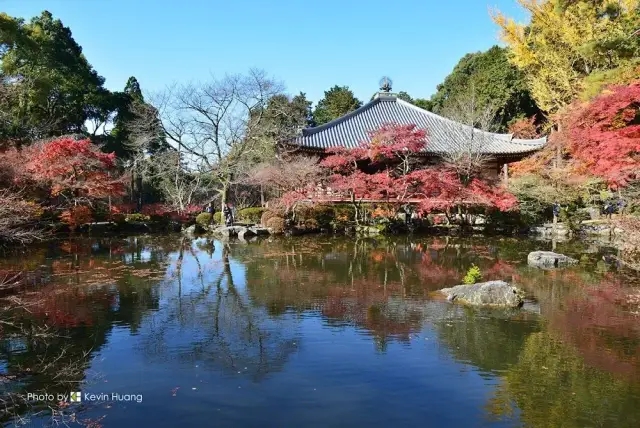https://www.dekitabi.com/itinerary/fushimi-daigo-temple-tour
Kyoto, the ancient capital of Japan, is renowned for its rich cultural heritage and historical landmarks. Among its many treasures are four iconic sites: Fushimi Inari Taisha, Tofuku-ji, Shorinji Temple, and Daigo-ji Temple. Each of these destinations offers a unique glimpse into Japan’s spiritual and architectural legacy, making them must-visit locations for travelers seeking to immerse themselves in the country’s profound history.
Fushimi Inari Taisha: The Iconic Red Torii Gates

https://www.dekitabi.com/attraction/fushimi-inari-taisha
Fushimi Inari Taisha, one of Kyoto’s most famous and visually striking shrines, is dedicated to Inari, the Shinto god of rice and agriculture. This grand shrine, located in the Fushimi ward, is renowned for its thousands of vibrant red torii gates that form a picturesque pathway up Mount Inari. The torii gates, donated by individuals and businesses, create a mesmerizing tunnel effect that attracts photographers and visitors from around the world.
As you walk through the torii gate-covered trails, you’ll encounter various smaller shrines and statues of foxes, considered to be Inari’s messengers. The main shrine building, dating back to 1499, showcases traditional Japanese architectural elements and offers a serene space for prayer and reflection. For those who enjoy hiking, the trails leading up the mountain provide stunning panoramic views of Kyoto and its surrounding landscapes.
Tofuku-ji: A Zen Masterpiece

https://www.dekitabi.com/attraction/tofuku-ji
Tofuku-ji, one of Kyoto’s oldest and largest Zen temples, was founded in 1236 by the influential monk Enni Ben’en. Located in the southeastern part of the city, Tofuku-ji is famed for its stunning autumn foliage and impressive architecture. The temple’s name, a combination of two great temples in Nara (Todai-ji and Kofuku-ji), reflects its historical significance and grandeur.
The Hojo, or Abbot’s Quarters, features beautifully landscaped gardens designed by Mirei Shigemori, a modern Japanese garden designer. These gardens, including the Eastern Garden with its unique checkered pattern of moss and stones, exemplify the Zen principles of simplicity and tranquility. The Tsutenkyo Bridge, which spans a valley of maple trees, provides breathtaking views, especially during the autumn season when the leaves turn vibrant shades of red and orange.
Shorinji Temple: A Hidden Gem

https://www.dekitabi.com/attraction/shorinji-kyoto
Shorinji Temple, often overshadowed by its more famous counterparts, offers a peaceful retreat for those looking to escape the crowds. Located in the Uji area of Kyoto, Shorinji Temple is a lesser-known treasure with a serene atmosphere and beautiful surroundings. This small temple, established in the early 9th century, is part of the Shingon sect of Buddhism.
Visitors can explore the temple grounds, which include a picturesque garden and a main hall adorned with intricate woodwork and Buddhist statues. The temple’s quiet ambiance makes it an ideal spot for meditation and contemplation. Shorinji Temple is also known for its cherry blossoms in the spring and colorful foliage in the autumn, providing a tranquil setting for nature lovers and photographers.
Daigo-ji Temple: A World Heritage Site

https://www.dekitabi.com/attraction/daigo-ji-temple
Daigo-ji Temple, a UNESCO World Heritage Site, is a sprawling temple complex located in the southeastern part of Kyoto. Founded in 874 by the monk Shobo, Daigo-ji is renowned for its beautiful pagoda, ancient structures, and stunning natural surroundings. The temple’s name, “Daigo,” means “ghee” in Sanskrit, symbolizing the ultimate truth in Buddhism.
The five-story pagoda, completed in 951, is one of the oldest surviving wooden structures in Kyoto and a testament to the architectural prowess of the Heian period. The temple grounds are divided into two main areas: the upper and lower precincts. The lower precinct features the Sanboin, a residential hall with exquisite gardens designed by Toyotomi Hideyoshi for cherry blossom viewing. The upper precinct, located on Mount Daigo, offers a more secluded and serene environment with hiking trails that lead to smaller, less-visited temple buildings.
Daigo-ji Temple is particularly famous for its spring cherry blossom festival, known as “Daigo no Hanami,” which dates back to the 16th century when Toyotomi Hideyoshi held a grand celebration here. The temple’s vibrant cherry blossoms attract visitors from all over Japan, creating a magical atmosphere during the blooming season.
Conclusion
Exploring Kyoto’s iconic temples and shrines, such as Fushimi Inari Taisha, Tofuku-ji, Shorinji Temple, and Daigo-ji Temple, offers a profound journey into Japan’s spiritual and cultural heritage. Each site, with its unique history, architecture, and natural beauty, provides a glimpse into the ancient traditions that have shaped Kyoto into the cultural heart of Japan. Whether you are captivated by the mesmerizing torii gates of Fushimi Inari, the Zen serenity of Tofuku-ji, the hidden charm of Shorinji, or the historical grandeur of Daigo-ji, these destinations promise an unforgettable experience for all who visit.
By immersing yourself in the rich tapestry of Kyoto’s religious and cultural landmarks, you’ll gain a deeper appreciation for the enduring legacy of Japan’s past and the serene beauty that continues to inspire travelers from around the world.


Leave a Reply